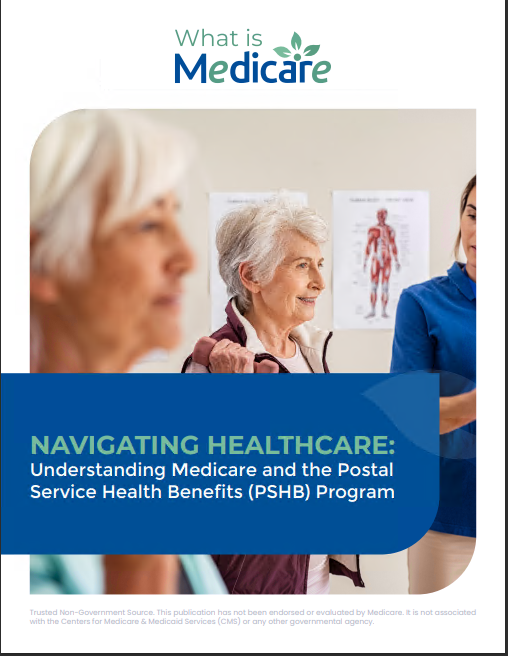Key Takeaways:
- Know Your Enrollment Periods: Missing Medicare deadlines can leave you without coverage or with late penalties. Stay aware of your timelines to make seamless changes to your plan.
- Understand Your Options: Each enrollment period has different rules and limitations, so know what changes you can make during each one to ensure you pick the best plan for your needs.
Navigating Medicare Enrollment Like a Pro
Switching Medicare plans can feel overwhelming, especially if you’re not sure when you’re allowed to make changes or what deadlines matter most. Every enrollment period serves a different purpose, and missing a crucial deadline could mean paying extra or waiting months for your coverage to start. Here, we’ll break down each key Medicare enrollment period, so you can confidently make the switch to a new plan if needed.
Initial Enrollment Period (IEP): Your Starting Point
What Is the IEP?
If you’re just about to turn 65, your Medicare journey begins with the Initial Enrollment Period, or IEP. The IEP is a seven-month window that gives you the chance to enroll in Medicare for the first time. This period spans three months before your 65th birthday, includes your birthday month, and continues for three months after.
Why It’s Important
Signing up during your IEP helps you avoid any late enrollment penalties that could follow you for years. If you miss this period, you might face penalties on both Medicare Part B and Medicare Part D (for prescription drugs). And trust me, those penalties can add up fast and will stick with you, so it’s best to sign up on time.
How to Make the Most of It
If you’re still working and have employer coverage, check with your HR department to see if your coverage will coordinate with Medicare. You may be able to delay your Part B enrollment without penalty if you’re covered by a qualifying employer health plan, but it’s essential to verify this.
General Enrollment Period (GEP): The Catch-Up Opportunity
What Is the GEP?
The General Enrollment Period (GEP) runs from January 1 to March 31 each year. This period is designed for people who missed their Initial Enrollment Period and still need to sign up for Medicare Part A and/or Part B. However, keep in mind that if you enroll during the GEP, your coverage won’t start until July 1 of that year.
Late Penalties
Using the GEP could mean you’ll face late enrollment penalties, especially if you’re signing up for Part B or Part D late. These penalties are calculated based on how long you delayed your enrollment, and they can increase your premiums for as long as you have Medicare.
Annual Enrollment Period (AEP): Your Yearly Plan Check-In
What Is the AEP?
From October 15 to December 7, the Annual Enrollment Period (AEP) is the time for current Medicare enrollees to review and make changes to their coverage. During the AEP, you can switch between Original Medicare and Medicare Advantage, change your Part D plan, or make adjustments based on your health needs and budget.
What You Can Change During AEP
AEP is your chance to:
- Switch to a Medicare Advantage plan from Original Medicare.
- Switch from a Medicare Advantage plan back to Original Medicare.
- Switch to a different Medicare Advantage plan if you’re already enrolled in one.
- Change your Part D (prescription drug) plan for better coverage or lower premiums.
Timing Matters
Any changes made during the AEP become effective on January 1. Don’t wait until the last minute, as this period can be a busy time with long wait times if you need to speak with a representative. Plus, you’ll want time to review the options thoroughly.
Medicare Advantage Open Enrollment Period (MA OEP): Another Chance to Adjust
What Is the MA OEP?
The Medicare Advantage Open Enrollment Period (MA OEP) is available from January 1 to March 31, but only for people already enrolled in a Medicare Advantage plan. This period allows you to make one change to your Medicare Advantage plan or switch back to Original Medicare. It’s a great option if you realize early in the year that your current plan isn’t the right fit.
Limited Flexibility
The MA OEP isn’t as flexible as the AEP. You can only make one change during this period, and you can’t switch from Original Medicare to Medicare Advantage. Also, any changes you make take effect the following month, so plan ahead.
Special Enrollment Periods (SEP): A Lifeline for Special Circumstances
What Is an SEP?
Special Enrollment Periods (SEPs) are triggered by specific life events that allow you to enroll or make changes to your Medicare plan outside the regular enrollment windows. For example, moving to a new area or losing employer-based coverage are qualifying events. SEPs have unique rules depending on the situation, so be sure to understand the specific deadlines that apply to your life event.
Examples of SEP-Qualifying Events
- Moving to a different county or state where your current plan isn’t offered.
- Losing other health coverage, such as employer or union-sponsored coverage.
- Qualifying for Medicaid or other assistance programs.
Flexible Timing
Each SEP has its own timing, generally allowing you to enroll in a new plan within 2-3 months of the qualifying event. By taking action quickly, you’ll avoid lapses in coverage and keep your health care needs covered.
Choosing Between Original Medicare and Medicare Advantage
Original Medicare: Flexibility and Nationwide Coverage
Original Medicare consists of Part A (hospital insurance) and Part B (medical insurance). If you prefer having the freedom to visit any doctor or hospital that accepts Medicare, Original Medicare might be your best option. Many beneficiaries also add a Part D plan for prescription drug coverage and may purchase a Medigap policy to help cover out-of-pocket costs.
Medicare Advantage: All-in-One Coverage
Medicare Advantage (Part C) combines Parts A and B and often includes Part D, along with other benefits like dental and vision. However, most Medicare Advantage plans come with network restrictions, meaning you’ll need to see in-network providers. If the all-in-one approach appeals to you and you don’t mind the network limits, Medicare Advantage can be a convenient choice.
Prescription Drug Coverage: Avoiding Penalties with Part D
Even if you don’t take many prescriptions now, consider enrolling in Part D during your IEP to avoid late penalties. These penalties are permanent and increase your Part D premium for every month you delay enrolling. Many people find it easier to add Part D when they first sign up for Medicare rather than facing penalties later.
Reviewing Your Plan Each Year: A Worthwhile Habit
Why Annual Reviews Are Important
Healthcare needs change, and so do Medicare plans. What worked last year may not be the best fit this year. Each fall, your Medicare Advantage or Part D plan will send you an Annual Notice of Change, detailing any changes to costs, coverage, or provider networks. Taking the time to review these changes will help you make an informed choice during the AEP.
Questions to Consider
When reviewing your plan options, ask yourself:
- Have my healthcare needs changed?
- Will my doctors and pharmacies still be in-network?
- Are my prescriptions still covered, and at what cost?
Your Game Plan for Success
With these key enrollment periods in mind, you’re well-equipped to choose the Medicare plan that best suits your health needs. Whether it’s making a first-time selection or switching to a new plan, knowing the exact deadlines and options available can make the process much easier. Staying informed about your choices can lead to better coverage and potentially lower costs, giving you peace of mind.
Medicare Enrollment Dates to Remember
Initial Enrollment Period (IEP): 7 months around your 65th birthday (3 months before, the month of, and 3 months after).
General Enrollment Period (GEP): January 1 – March 31, with coverage starting July 1.
Annual Enrollment Period (AEP): October 15 – December 7, with changes effective January 1.
Medicare Advantage Open Enrollment Period (MA OEP): January 1 – March 31, only for Medicare Advantage enrollees.
Special Enrollment Periods (SEP): Timing depends on the specific life event, with deadlines generally within 2-3 months of the event.
Take Charge of Your Medicare Choices
Switching Medicare plans doesn’t have to be overwhelming. By knowing when to enroll, reviewing your options each year, and understanding what each period allows, you can take full control of your Medicare coverage. Your health needs are unique, and with a little preparation, you can make sure your Medicare plan keeps up with them.










